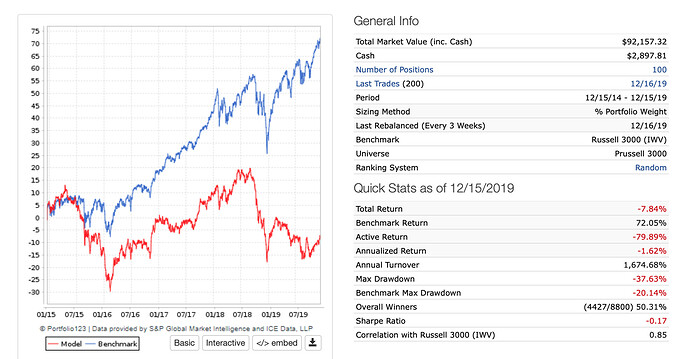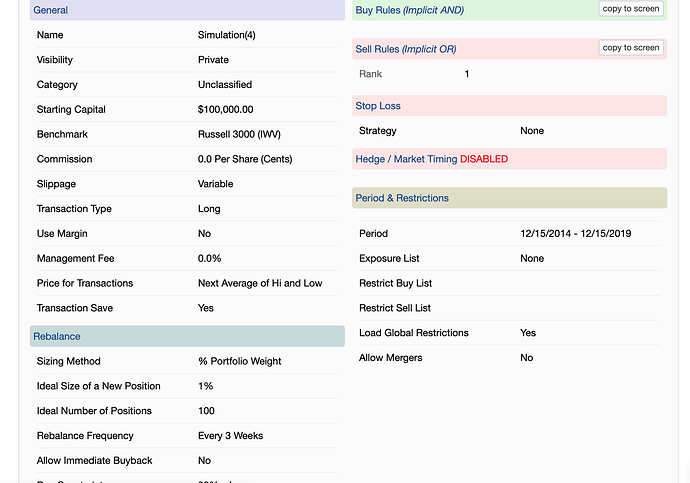There has been discussion on another thread about the underperformance of Designer Models.
Designer Models are a good data-set for research, I think. So why are the models underperforming?
The easiest explanation would be that our models do not have much of an edge and the slippage/transaction costs are a constant drag on returns.
To help look into this hypothesis I used (also see second image):
-
variable slippage
-
3 week rebalance period (typical of the holding period for some of my models)
-
Prussell 3000 universe
-
Russell 3000 benchmark
-
Next average hi and low
-
5 year backtest (5 year results are available for Designer Models).
-
100 stocks
-
no buy rules. Sell rule 1
I averaged 5 runs (the first image is for one of those runs):
Active return mean: -79.4
When the slippage is removed the average of 5 runs is -20. This would suggest that random selection of stocks may underperform the cap-weight Russell 3000 because….Because the index is cap weighted (and the random selection of stocks is not).
The net effect may be roughly -59.4 over a five year period from slippage.
Conclusion: our Designer Models probably have a little bit of an edge (on average) but this edge cannot overcome the effect of slippage (on average).
Speculation:
There may be some models with enough edge to overcome the slippage. I would guess those models do not have much overfitting as the effect of overfitting is to make the selection of stocks more random. Random as is the selection of stocks in this model with a Random Ranking System. Overfitting makes your stock selections more random: reducing your edge.
Further Speculation:
[b]1) At least some of the factors/functions you select have to have a very solid edge.
-
Overfitting is a problem that you may want to address if you are here to make money and not to be entertained.
-
You can focus on slippage but this will also have an effect on your edge. E.G., Ports with long holding periods may have more (or less) of an edge. Or large-cap stocks may be more efficient with less of a potential edge.[/b]
[color=firebrick]Have FUN![/color]
-Jim

